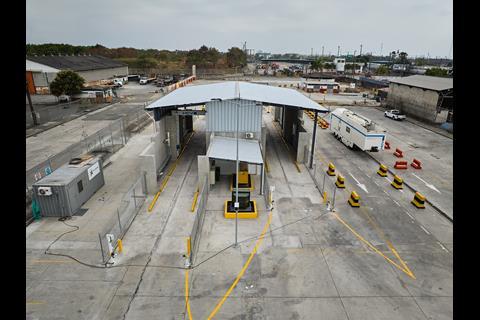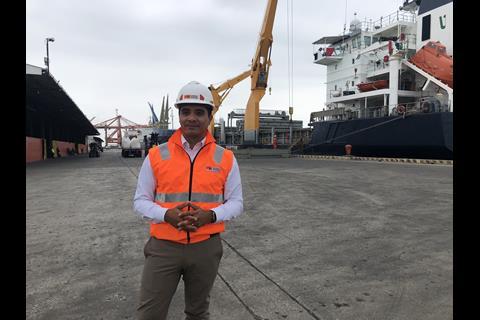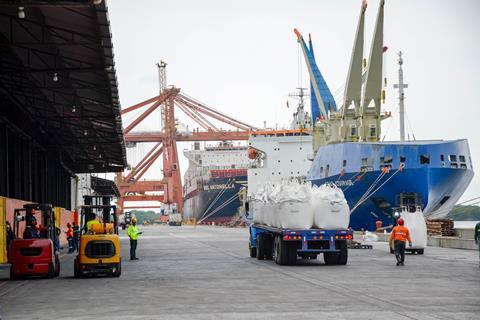The explosion of drug trafficking and related violence in Ecuador has made security a hot topic in the banana industry. One business taking the problem seriously is Contecon, which operates the country’s largest port in Guayaquil
Once considered one of the safest countries in South America, Ecuador has descended into drug gang violence in the past few years. And unfortunately for the banana sector, exporters of the fruit find themselves at the frontline of the country’s battle with the narcos.
Gangs – operating both outside and inside the country’s weak and overcrowded prison system – have been competing for cocaine trafficking routes, often stashing the drug in shipments of bananas which leave Ecuador’s ports in large volume year-round for Europe and the US.
Due to Ecuador’s location (between the world’s biggest cocaine-producing countries, Colombia and Peru), its porous borders, and its major Pacific Ocean ports, drug trafficking is not a new problem in Ecuador. But the scale and intensity of the issue has ramped up considerably. In 2022, the volume of cocaine seized at the country’s ports tripled to 77.4 tonnes – and it goes without saying that this is just the tip of the iceberg.
Where there is drug trafficking, there is gang violence. So unsurprisingly, the number of violent deaths in Ecuador has mushroomed, rising to 3,568 in the first half of 2023 alone. The epicentre of the violence has been Guayas, the province of the port city of Guayaquil.
The Port of Guayaquil is the biggest maritime terminal in Ecuador, accounting for 46 per cent of the country’s total export trade and around 60 per cent of its banana shipments. Every year around 5m tonnes of bananas pass through the port, bound for markets in Europe, the US and further afield. Given the huge volume, wide reach and 52-week flow of banana exports from Latin America, banana containers are a natural choice for drug smugglers.
Aside from the threat of kidnapping, physical violence and murder, banana exporters run the risk of losing whole shipments of the fruit or running into legal difficulties if a ‘contaminated’ container is seized by the authorities. The transit from farm to port is thought to be the weakest link in the supply chain from a security perspective and where contamination is most likely to occur.
In a bid to prevent violence and reduce drug trafficking at the Port of Guayaquil itself, US$3.5m has been invested in beefing up security, police barracks have been built on site, and operational changes have been made to ensure there is just one point of entry and exit for vehicles. In addition, extra checks have been carried out on containers leaving the port in recent months, with around a sixth subject to manual checks.
Going forward, Contecon, the company that operates the port, has invested US$15m in three state-of-the-art drive-through scanners to inspect the cargo of every container and vehicle that passes through. One of these machines is a mobile inspection system that can be moved around the port as required, while the other two are stationary portals. These scanners will replace the cumbersome and time-consuming physical inspections, ensuring that 100 per cent of cargo is checked.
In addition, from March 2024 RFID seals will be placed on all containers entering the port to prevent their loads from being tampered with and to allow the containers’ journey through the port to be traced – information that will be encrypted and invisible to anyone on the terminal.
Contecon’s chief commercial officer Fohodil Galeas says he knows these measures won’t eliminate drug trafficking in the country. But he is confident they will significantly reduce it, forcing drug gangs to switch their focus to other terminals in Ecuador or the wider region. In this way, hopefully Contecon will at least become an example for other ports to follow.






